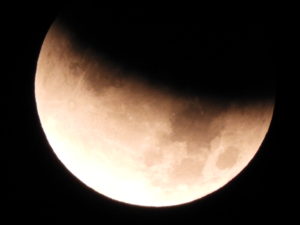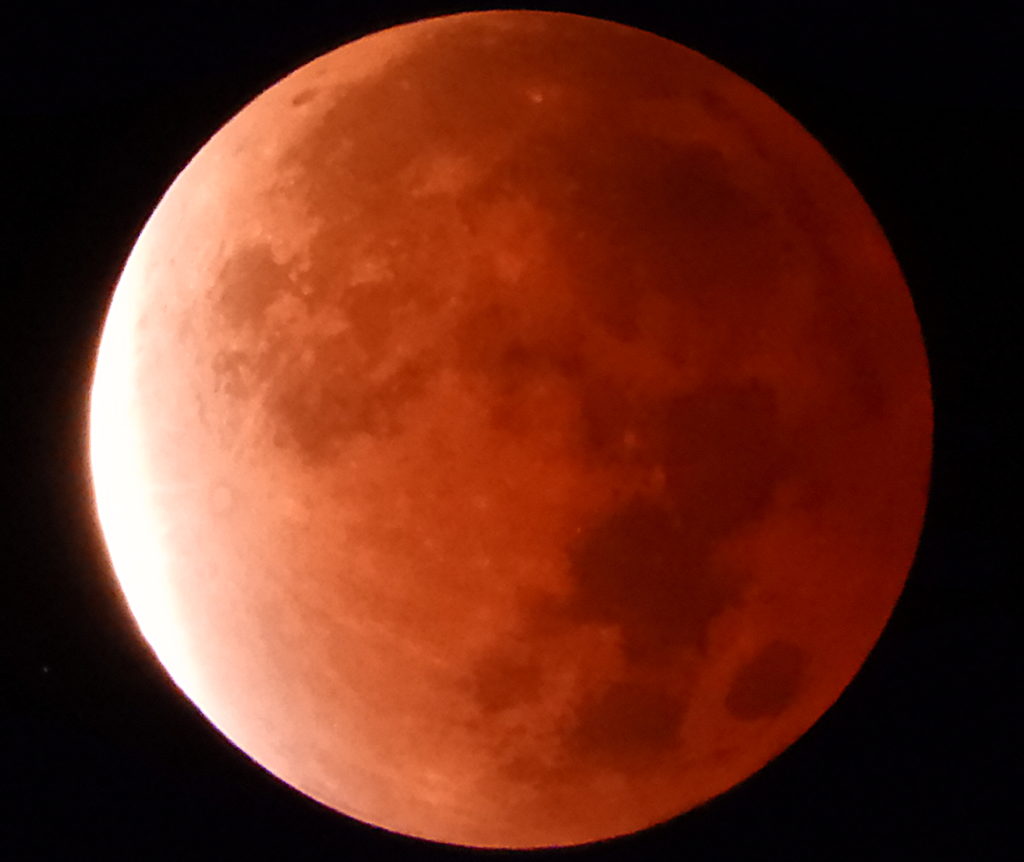Early morning on Friday, November 19, the Earth started passing between the Sun and the Moon, putting the Earth’s shadow on the moon; in other words, there was a lunar eclipse.
For those watching, the slight dimming started at close to 1 a.m., but not until almost 2:30 was the shadow really definite. At 4 a.m., the Earth’s shadow covered 97 percent of the moon and the real show began.
The lunar eclipse of the Beaver Moon, as this full moon is called, was not just a light show in black and white. The moon looked like a dark bite was taken out of it, until the eclipse became almost total. Then the Moon turned a rosy red, as the light from the Sun bent around Earth (and went through Earth’s atmosphere) before reaching the Moon. Basically, lunar eclipse watchers saw all of the world’s sunrises and sunsets projected onto the Moon for the duration of the near total eclipse.
The next near total lunar eclipse will be on May 16, 2022.




